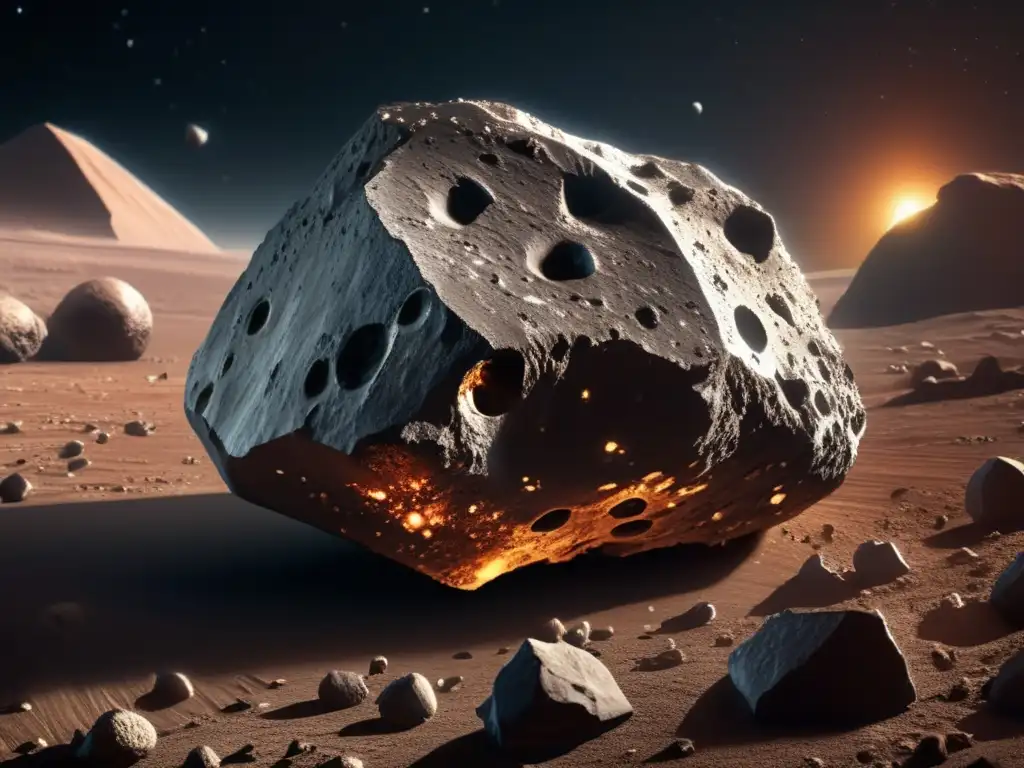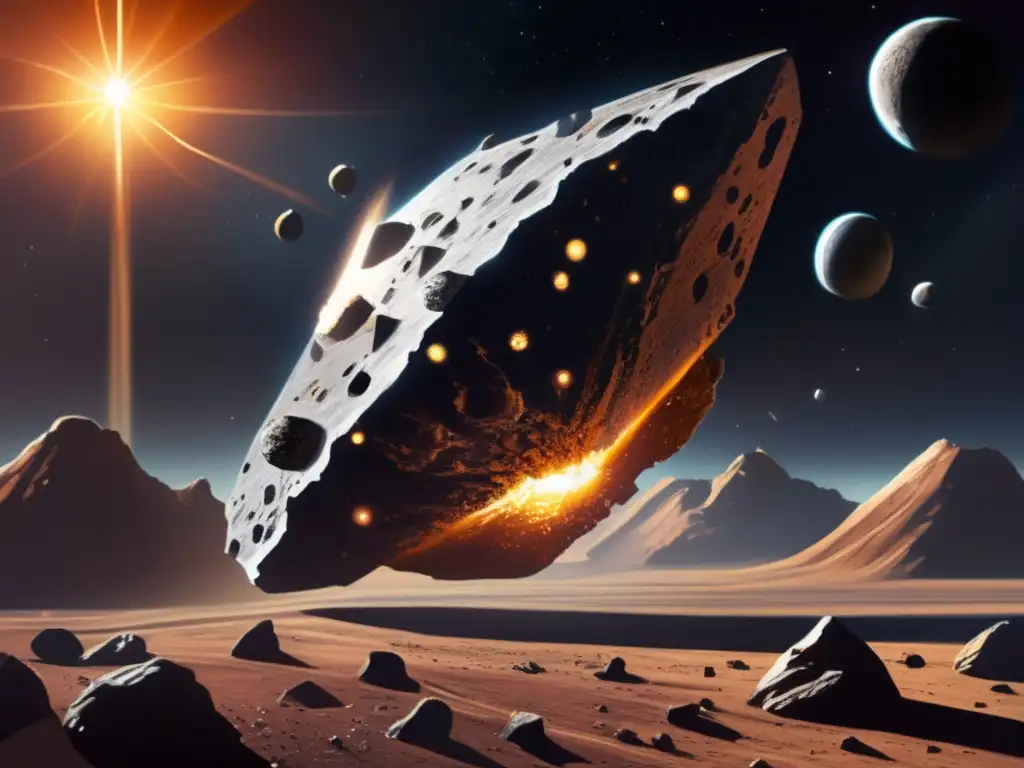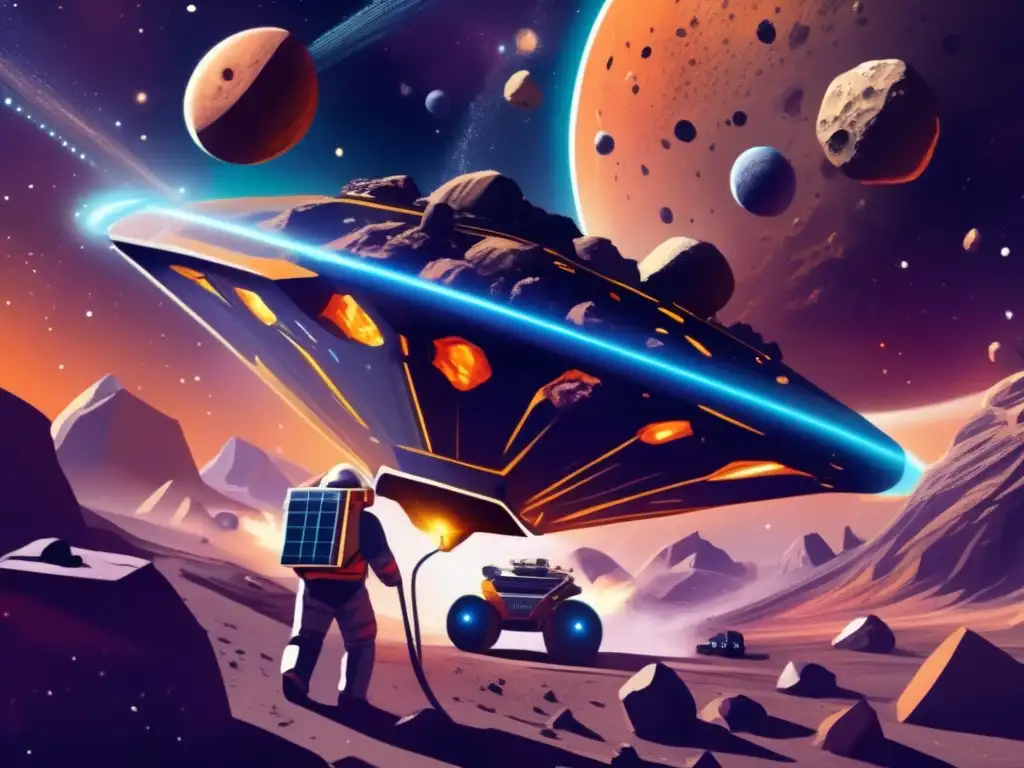Scanning The Stars: Identifying Potential Asteroids For Mining

Introduction
Asteroid mining has become an exciting frontier in space exploration and resource extraction. With the ever-increasing demands on Earth's resources, the potential for harnessing the vast mineral wealth of asteroids offers a promising solution. However, before any mining operations can take place, it is essential to identify suitable asteroids with valuable resources. In this article, we will explore the methods and technologies used in scanning the stars to identify potential asteroids for mining.
Understanding Asteroid Composition

The Role of Spectroscopy
Spectroscopy plays a crucial role in determining the composition of asteroids. By analyzing the light reflected or emitted by these celestial objects, scientists can identify the presence of specific elements and compounds. Different minerals and metals leave distinct spectral signatures, aiding in the identification of valuable resources such as platinum, gold, and rare earth elements.
Remote Sensing Techniques
Remote sensing techniques, such as radar and infrared imaging, provide valuable data on asteroid shape, size, and surface features. This information helps determine the feasibility of mining operations and aids in identifying potential landing sites. Additionally, radar measurements can reveal the density and internal structure of an asteroid, facilitating resource estimation.
Telescopic Surveys
Telescopic surveys from ground-based and space-based observatories are vital for identifying potential asteroids. These surveys scan the skies, cataloging vast numbers of celestial objects. By observing the motion and trajectory of asteroids over time, scientists can estimate their composition and assess their suitability for mining.
Asteroid Prospecting Missions

Robotic Exploration
Robotic spacecraft missions, such as NASA's OSIRIS-REx and Japan's Hayabusa2, are crucial for gathering in-depth data on asteroids. These missions involve sending spacecraft to rendezvous with specific asteroids, collect samples, and return them to Earth for analysis. By studying these samples, scientists can gain a deeper understanding of asteroid resources and refine their mining strategies.
Proximity Operations and Mining Demonstrations
Proximity operations and mining demonstrations provide valuable insights into the challenges and feasibility of extraction techniques on asteroids. By deploying mining probes or landers on selected asteroids, scientists can test various methods for resource extraction. These demonstrations allow for the refinement of mining technologies and help develop sustainable practices for future asteroid mining endeavors.
Future Asteroid Mission Concepts
Scientists and engineers are continuously developing innovative mission concepts for asteroid exploration and mining. Concepts, such as capturing and redirecting asteroids to orbit the Moon or Earth, offer the prospect of easier access to valuable resources. The study and development of such mission concepts are essential for expanding our understanding of asteroid resources and the potential for long-term sustainable mining operations.
Mitigating Challenges in Asteroid Mining

Orbital mechanics and navigation present significant challenges in scanning and identifying potential asteroids for mining. Precise calculations of an asteroid's trajectory and orbital parameters are essential for successful missions. Advanced algorithms and modeling techniques help predict asteroid positions accurately and enable spacecraft to navigate complex trajectories to reach target asteroids.
Resource Extraction and Processing
Developing efficient methods for resource extraction and processing is crucial for the success of asteroid mining operations. Challenges include extracting resources from low-gravity environments, refining techniques to separate valuable minerals, and developing sustainable processing systems that conserve resources and minimize environmental impact.
Legal and Regulatory Considerations
The legal and regulatory aspects surrounding asteroid mining are complex and evolving. International agreements, such as the United Nations Outer Space Treaty, govern the exploration and utilization of space resources. Addressing legal and ethical concerns, ensuring equitable distribution of resources, and establishing a framework for commercial operations are key considerations in the future development of asteroid mining.
Frequently Asked Questions

-
Can all asteroids be mined for resources?
Not all asteroids are suitable for mining. The composition and accessibility of resources vary significantly among asteroids. Identifying potential candidates through spectroscopic analysis and remote sensing techniques helps focus mining efforts on asteroids with valuable resources.
-
How do scientists estimate the value of resources in asteroids?
Scientists estimate the value of resources in asteroids by combining data from spectroscopy, remote sensing, and sample return missions. By analyzing the mineral composition and abundance of valuable elements, they can assess the economic viability of mining operations.
-
What are the potential risks of asteroid mining?
Potential risks include the possibility of spacecraft collisions during mining operations, the introduction of alien materials to Earth, and the disruption of asteroid orbits leading to a collision with Earth. Implementing stringent safety protocols and thorough risk assessments are essential in mitigating these risks.
-
How can asteroid mining benefit Earth's economy and space exploration?
Asteroid mining offers the potential to alleviate resource scarcity on Earth by providing a new source of valuable minerals and metals. Additionally, the extraction of resources from asteroids can help sustain future space exploration missions and support the development of a space-based economy.
-
What are the current technological limitations in asteroid identification for mining?
Current technological limitations include limited observational data for small and distant asteroids, challenges in accurately predicting asteroid trajectories, and the need for more advanced remote sensing and spectroscopy capabilities. Continued technological advancements are necessary for reliable and efficient identification of potential asteroids for mining.
Conclusion
Asteroid mining represents a compelling pathway for unlocking the vast resources of our solar system. By scanning the stars and identifying potential asteroids for mining, scientists and engineers are working towards sustainable resource utilization beyond Earth's boundaries. The application of advanced technologies, prospecting missions, and innovative mission concepts brings us closer to a future where asteroid mining plays a vital role in both Earth's economy and the exploration of space. As we continue to delve deeper into this exciting field, let us embrace the possibilities and potential that asteroid mining holds for humankind's future.
We invite you to share your thoughts and engage with the asteroid community at www.asteroidrealm.com. Subscribe, share this article on social networks, and join us in the exploration and discussion of these fascinating celestial objects. Thank you for your time and attention.
Additional Resources

For further information on asteroid mining and related topics, please explore the following resources:
- NASA Asteroid and Comet Exploration
- ESA Kids: Learn About Asteroids
- Mining.com: Asteroid Mining News
 Pioneering The Cosmos: The Future Of Asteroid Mining
Pioneering The Cosmos: The Future Of Asteroid Mining Asteroid Mining: Overcoming The Energy Challenge
Asteroid Mining: Overcoming The Energy Challenge Building A Space Economy: The Role Of Asteroid Mining
Building A Space Economy: The Role Of Asteroid MiningIf you want to discover more articles similar to Scanning The Stars: Identifying Potential Asteroids For Mining, you can visit the Asteroid Mining and Resources category.
Leave a Reply

Articulos relacionados: